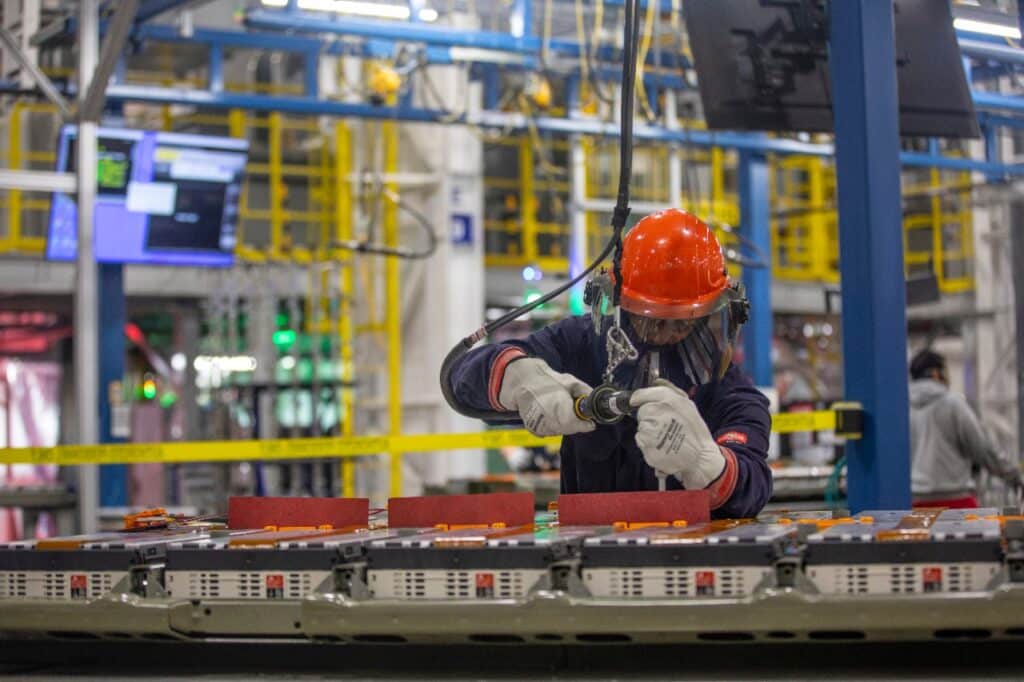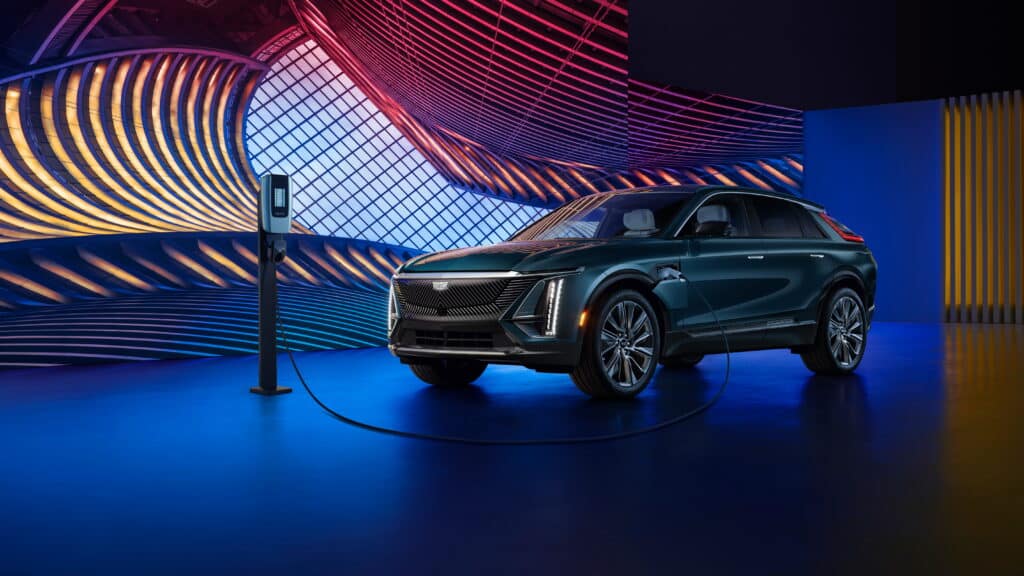GM, Now Number Two in North American EV Sales, Discards ‘Ultium’ Name
General Motors (GM) announced plans to drop the “Ultium” name for its electric vehicle (EV) batteries and supporting technologies, marking a strategic shift in its EV operations. This move comes after GM spent years promoting the Ultium brand and investing billions of dollars in developing in-house battery technology, which was once hailed as revolutionary and key to building a profitable EV business.
This shift indicates that GM is rethinking its approach to the EV market as it navigates challenges in scaling production and driving consumer adoption of electric vehicles.
The company said the EV batteries and the technologies will stay, but the name “Ultium” will not continue to be used other than production operations such as its “Ultium Cells” joint venture plants with LG Energy Solution.

“As GM continues to expand its EV business, the company is no longer branding its electric vehicle architecture, battery and cells, or EV components with the Ultium name, starting in North America,” the company said in a statement.
GM is rethinking its EV battery strategy in response to evolving market conditions and the arrival of new leadership, including JP Clausen, who now heads GM’s manufacturing, and Kurt Kelty, the company’s vice president of battery. These executives bring valuable experience as GM works to optimize its EV operations.
GM’s EV sales are increasing. In the third quarter of 2024, GM reported a 60% year-over-year increase in EV sales, reaching approximately 32,100 units.
Shifting Away from NMC
GM has begun shifting away from its original Ultium pouch cells, which were produced in partnership with LG using nickel manganese cobalt (NMC) chemistry. Instead, the automaker is exploring other battery types and chemistries to better adapt to market demands and improve performance.
Earlier in 2024, GM announced a more than $3 billion partnership with Samsung SDI, a competitor of LG, to produce prismatic cells—a type of hard-can battery. This move signifies a strategic shift in GM’s battery sourcing and manufacturing approach, aimed at enhancing its EV production capabilities and aligning with evolving technological trends, to improve cost efficiency, energy density, and vehicle performance.
“We’re moving from a single-source, single-form factor, single-chemistry to a multi-chemistry, multi-form factor, multi-supplier strategy,” Kelty told The Information. “What we’re going to do going forward is really optimize for each vehicle.”
GM is rethinking plans in other areas also. Rory Harvey, GM president of global markets, including North America, last month confirmed to CNBC that GM was completely rethinking its plans for a second all-electric vehicle plant in Orion Township, Michigan.
“We always get lessons. We always get learning,” Harvey said last month. “The reason that we’re doing what we’re doing with Orion is the fact that, you know, if you looked at the original gradient of EV adoption, there’s no doubt that, both in the industry and from ours, it was slightly more aggressive than it is. This gives us the ability to do a stop breath and refocus and say what is appropriate for the customer demands that are out there today?”
GM currently operates Factory Zero in Detroit, its only U.S. plant dedicated exclusively to producing electric vehicles (EVs). The Orion Assembly Plant was initially expected to become the company’s second EV-exclusive facility by the end of 2024. However, GM has decided to delay these plans by at least a year.
This postponement is part of GM’s broader strategy to adjust its EV rollout pace in response to market conditions and production challenges. Despite these changes, GM remains committed to its electrification goals while balancing the production of both traditional internal combustion engine vehicles and EVs.
General Motors Hosted Financial Analysts in Spring Hill, Tennessee To Share Optimism About 2025
General Motors (GM) recently shared an optimistic financial outlook for its electric vehicle (EV) business during a meeting with Wall Street analysts at its flexible manufacturing site in Spring Hill, Tennessee. GM emphasized its belief that 2025 will be a pivotal year for its EV profitability as the company continues to capture market share and expand its EV portfolio.
According to GM, the electric vehicle market is growing rapidly, and the company’s diverse EV portfolio is helping it take market share from competitors while attracting new customers. This portfolio diversity, which includes a wide range of models across different price points and categories, has been key to GM’s ongoing success.
In the third quarter of 2024, GM set another EV sales record and is now the second-largest seller of EVs in North America, solidifying its position as a major player in the electric vehicle industry. The automaker is on track to build and wholesale about 200,000 GM-branded EVs this year, marking significant progress in scaling up its production capabilities.
“We remain on track to produce and wholesale about 200,000 GM-branded EVs this year” in North America, GM CEO Mary Barra said during the investor event.
GM highlighted its diverse and rapidly growing EV portfolio as a key driver of its success, offering a wide range of electric vehicles to meet various customer needs. The company’s lineup includes long-range, affordable models like the Chevrolet Equinox EV, and luxury EVs like the Cadillac LYRIQ. Powerful GM electric trucks include the GMC HUMMER EV, Chevrolet Silverado EV, and GMC Sierra EV.
GM emphasized that no matter a customer’s preference, there’s a GM EV to suit their needs, and the company plans to expand its offerings with new models like the Cadillac VISTIQ and OPTIQ, and the return of the Chevy Bolt in late 2025.

In addition to expanding its vehicle lineup, GM is addressing one of the biggest concerns among potential EV buyers—range anxiety. Most GM EVs now offer more than 300 miles of range on a single charge, with some models like the Chevrolet Silverado EV RST providing nearly 500 miles of range.
To further ease range anxiety, GM is collaborating with automakers, charging networks like EVgo, and travel centers like Pilot Flying J to expand and improve charging infrastructure, making EV charging easier and more convenient for customers across North America. This comprehensive approach reflects GM’s commitment to accelerating EV adoption by offering reliable, long-range vehicles and addressing key barriers to entry in the EV market.
GM Approaching EV Profitability
The company stated, “As range anxiety ebbs and choice expands, demand should continue to grow. Our EV economics will improve as volumes increase, and we’re nearing the crossover point to profitability for EV sales. What has been a headwind to earnings will soon become a tailwind.”
GM President Mark Reuss criticized Ford, which established a specialized unit to bring down the cost of its EVs, called its “skunkworks” team.
“We don’t need to create a skunkworks to create affordable electric vehicles,” Reuss said, highlighting how GM has brought down costs on its EVs through reducing the number of parts per vehicle, among other measures.
This optimistic outlook reflects GM’s belief that as consumers become more comfortable with electric vehicles—thanks to improved range and a broader selection of models—the demand for EVs will rise. With increasing production volumes, GM anticipates that its financial performance in the EV sector will strengthen, turning previous challenges into opportunities for growth and profitability.

Electric Vehicle Marketing Consultant, Writer and Editor. Publisher EVinfo.net.
Services